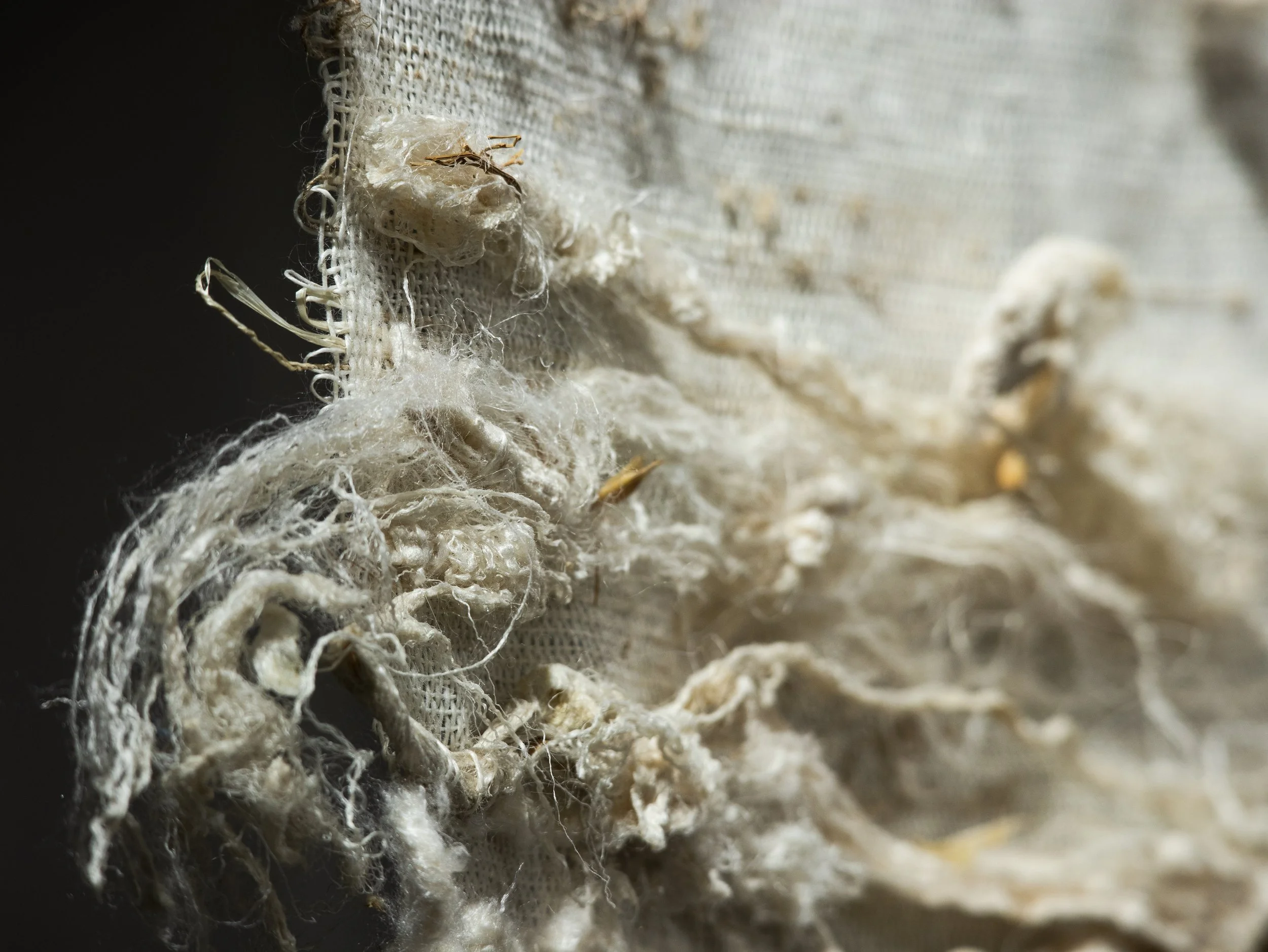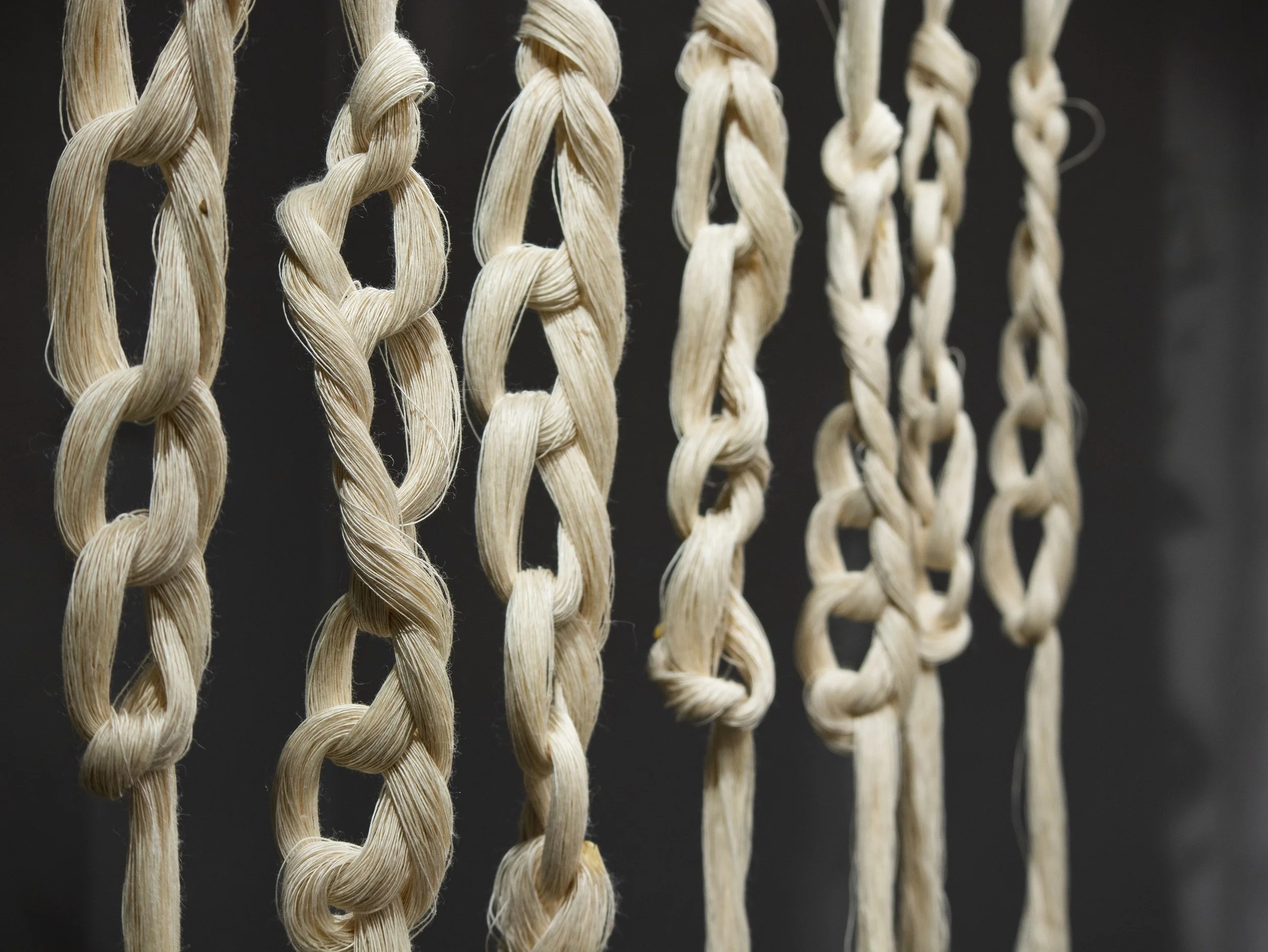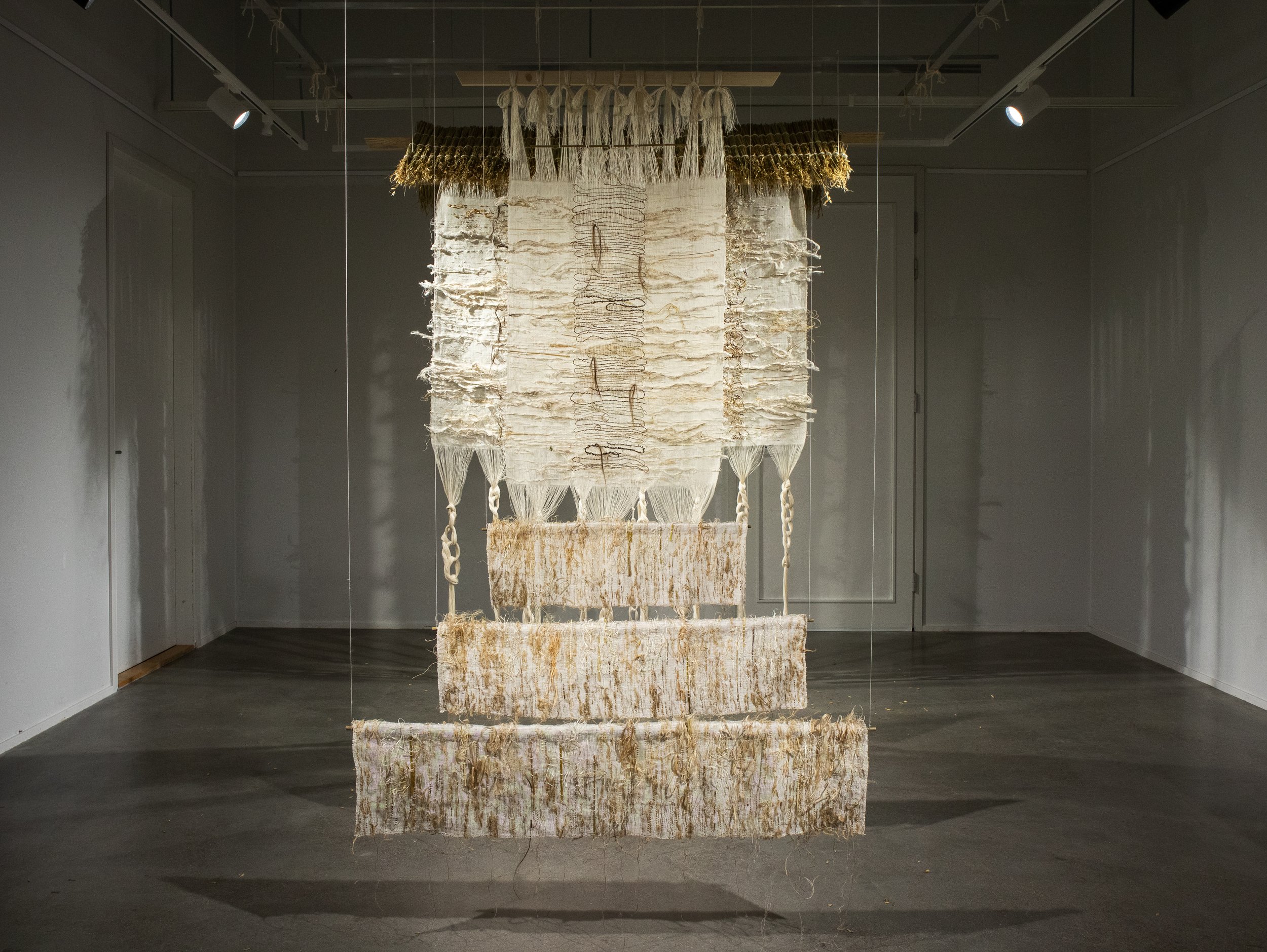SETTLING ROOTS (2024)
SETTLING ROOTS examines the experiences of belonging and not belonging through the concept of cultural identity - in what ways do these different experiences manifest, how are they constructed, how do they feel and how do they settle into a material form, that can be observed and understood by others?


According to the Finnish Board of Education, identity is defined as a person's self-image, perception of oneself. Cultural identity, on the other hand, is usually associated with the feeling of belonging to a group that behaves and speaks the same way, and whose worldview is based on a common value base, past and traditions (Vihreälehto, 2023). My own experiences of cultural identity often show as a feeling of loneliness, a longing for community, an interest in traditions and a need to identify with and understand my place in the long timeline of existence. The feelings are something that feel sacred as well as mundane, something momentary in the present as well as something strongly connected to memories - collective and personal. The experiences can be hard to describe in words – for me they are something very fundamental, defining my worldview and relationship with nature. On the other hand, they feel unsettled and constantly changing.Through the installation and its material expression, I explore my personal experience of cultural identity and related feelings and experiences of rootlessness, belonging and not belonging. I aim to explore the different ways these subjective and meaningful, but often elusive and vague experiences manifest and how they feel and materialize or can be materialized for also others to observe and understand.
SETTLING ROOTS installation was completed during my master’s exchange studies in Kyoto, Japan, from October 1 to December 31, 2024. It was exhibited in Kyoto, at Kyoto City University of Arts in 11.-15.12.2023, and The side Gallery in 5.-7.1.2024. The installation was exhibited at Aalto University School of Arts and Design, Väre, in 21.2.-1.3.2024. The shape / structure of the installation is based on my memories of the Kamidana, a Shinto home altar intended for everyday worship of kamis, gods/spirits, built by my late Japanese grandfather. I never got to meet my grandfather, so for me the Kamidana became the only tangible thing that symbolized his essence and served as proof of his existence. The wooden Kamidana contained a built-in light that, when lit, illuminated the magical structure from within. After my grandmother passed away, Kamidana was disposed of according to tradition by burning in a nearby shrine. With the loss of my grandparents and the kamidana, I felt to have lost all concrete links to my unknown heritage. Over time, the need to strengthen the connection to my Japanese roots has only grown - I had to build my own version of Kamidana.
My interest in dealing with cultural identity in my work stems from growing up as a Japanese-Finnish person in Finland. As a mixed-Finn / third culture kid, I have felt like an outsider in one way or another, not fully belonging to anything or anywhere. I have later realised that the experience of not belonging is one that many friends of mine, who grew up or live in a multicultural home, can identify with - we are always half, or parts of something, and never enough to be fully / entirely anything. The relevance of this experience is highlighted in how we define ourselves, connect with the people around us, feel a sense of belonging or see our place in different communities.

I like to work with natural fiber materials, as well as other found textile materials. SETTLING ROOTS contains among other things my own hair, parts of utility plants traditionally used in agriculture in Japan and Finland (such as oat and rice grain), as well as locally collected fibers from harmful invasive plant species (such as Japanese Rose, Lupine and Canadian golden rod). Through invasive species, I have found an interesting and unexplainable kinship. As their name suggests, harmful invasive plant species are thought of and seen in a negative light, depending on where they have been transported by humans and ended up taking root. It seems contradictory that these plants are considered and perceived as something so negative in relation to others. At the same time, I understand that invasive species can indicate serious threats to the balance and ecosystems of new environments. What about people? Could SETTLING ROOTS serve as some sort of metaphor for my conflicted feelings about my transcontinental heritage?


SETTLING ROOTS consists of ten parts suspended from above, which hang in the depth direction in eight different levels. The work measures approximately 290 cm (depth) x 250 cm (height) x 220 cm (width) and weighs a total of approximately 10 kg.
Reference: Vihreälehto, Ira. 2023. Mikä on kulttuuri-identiteetti? Opetushallitus.
https://www.oph.fi/fi/opettajat-ja-kasvattajat/mika-kulttuuri-identiteetti (1.9.2023)
Photos by Ayaka Mizuno, 2024.
